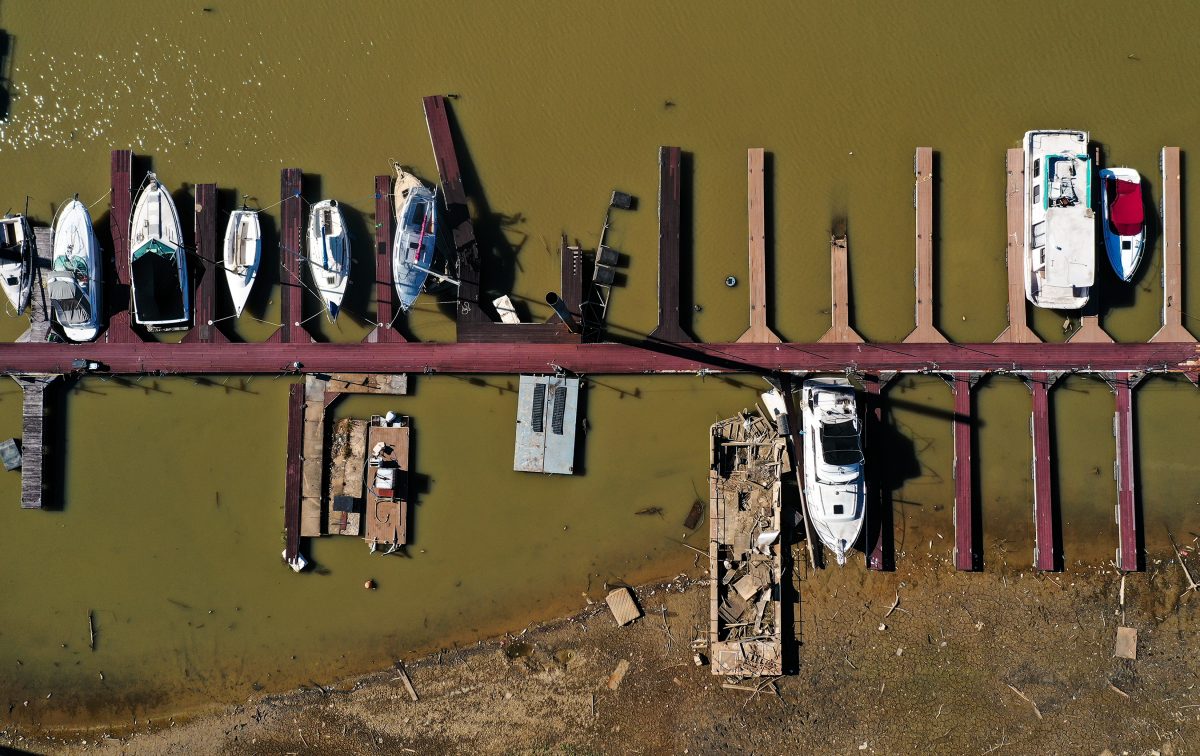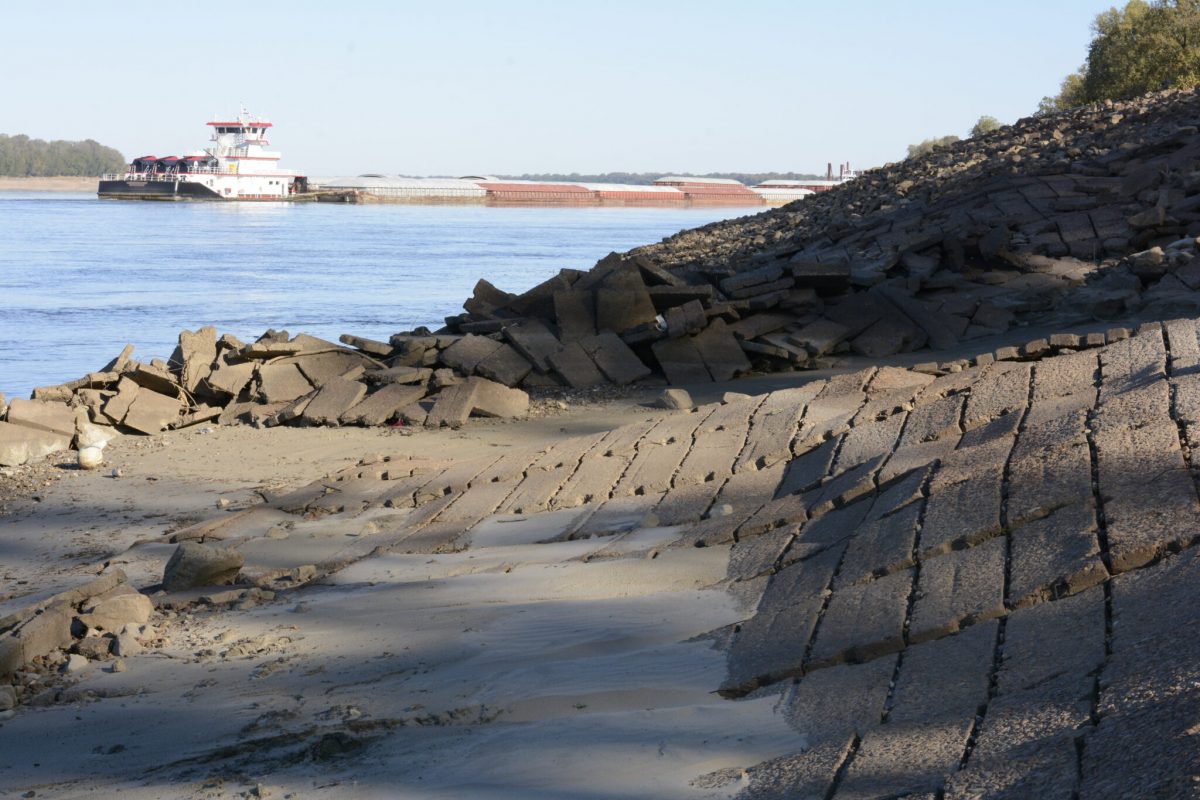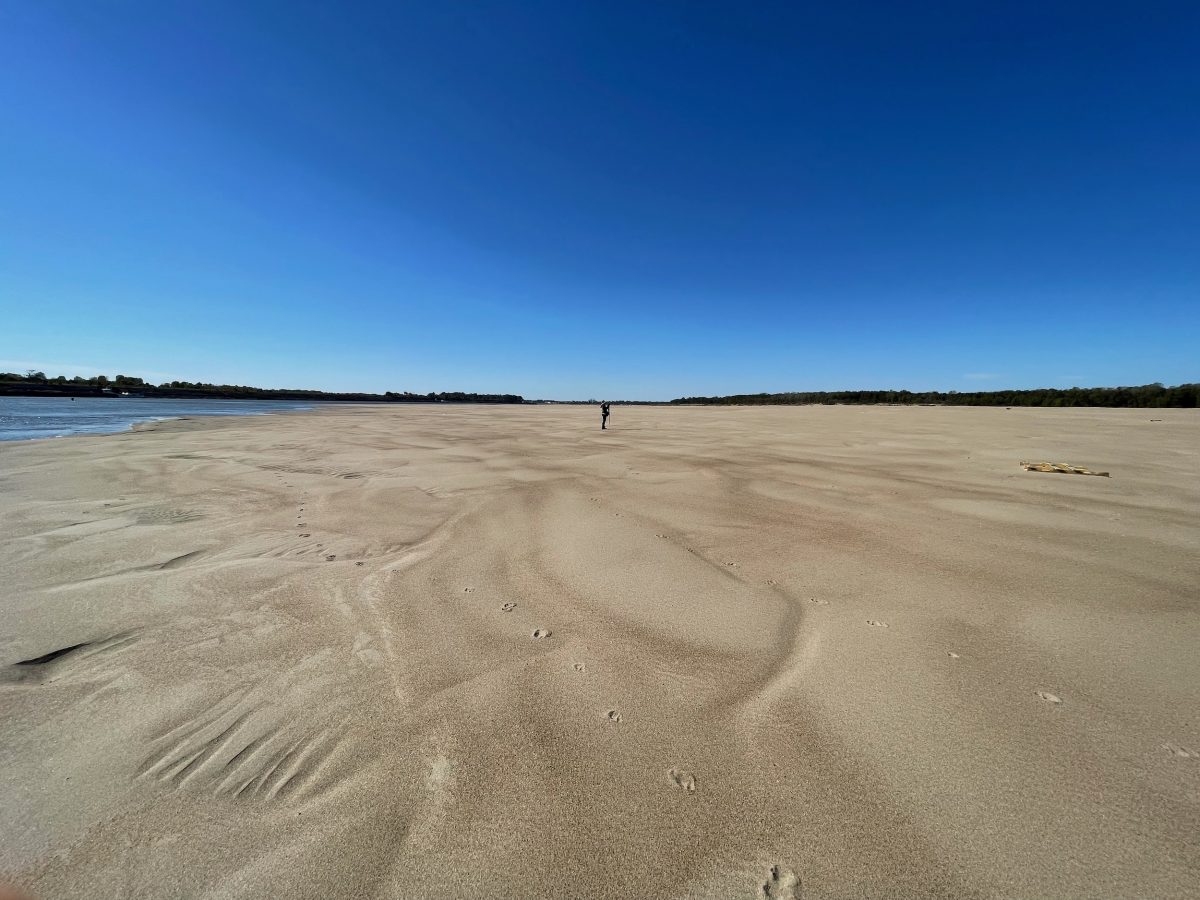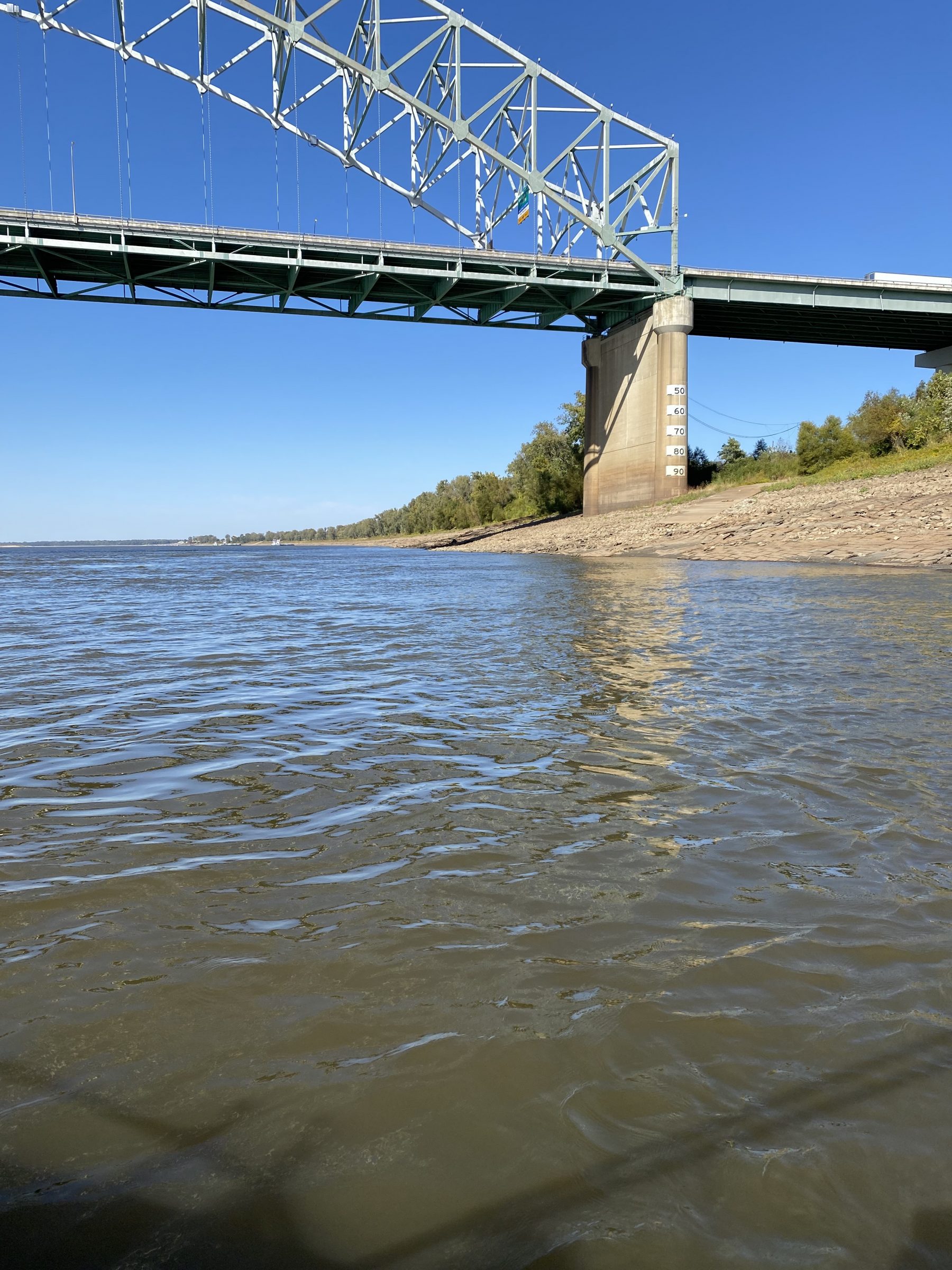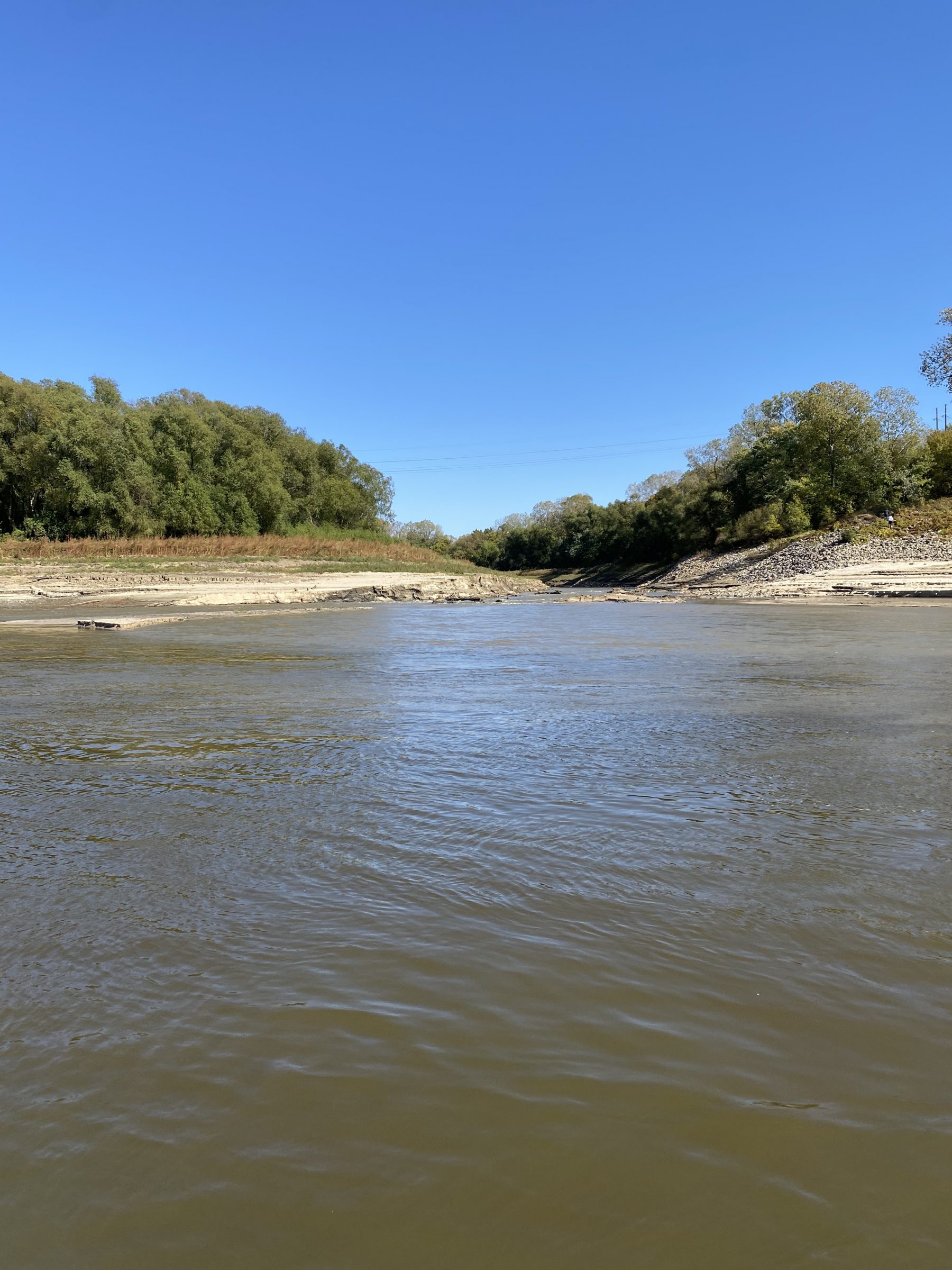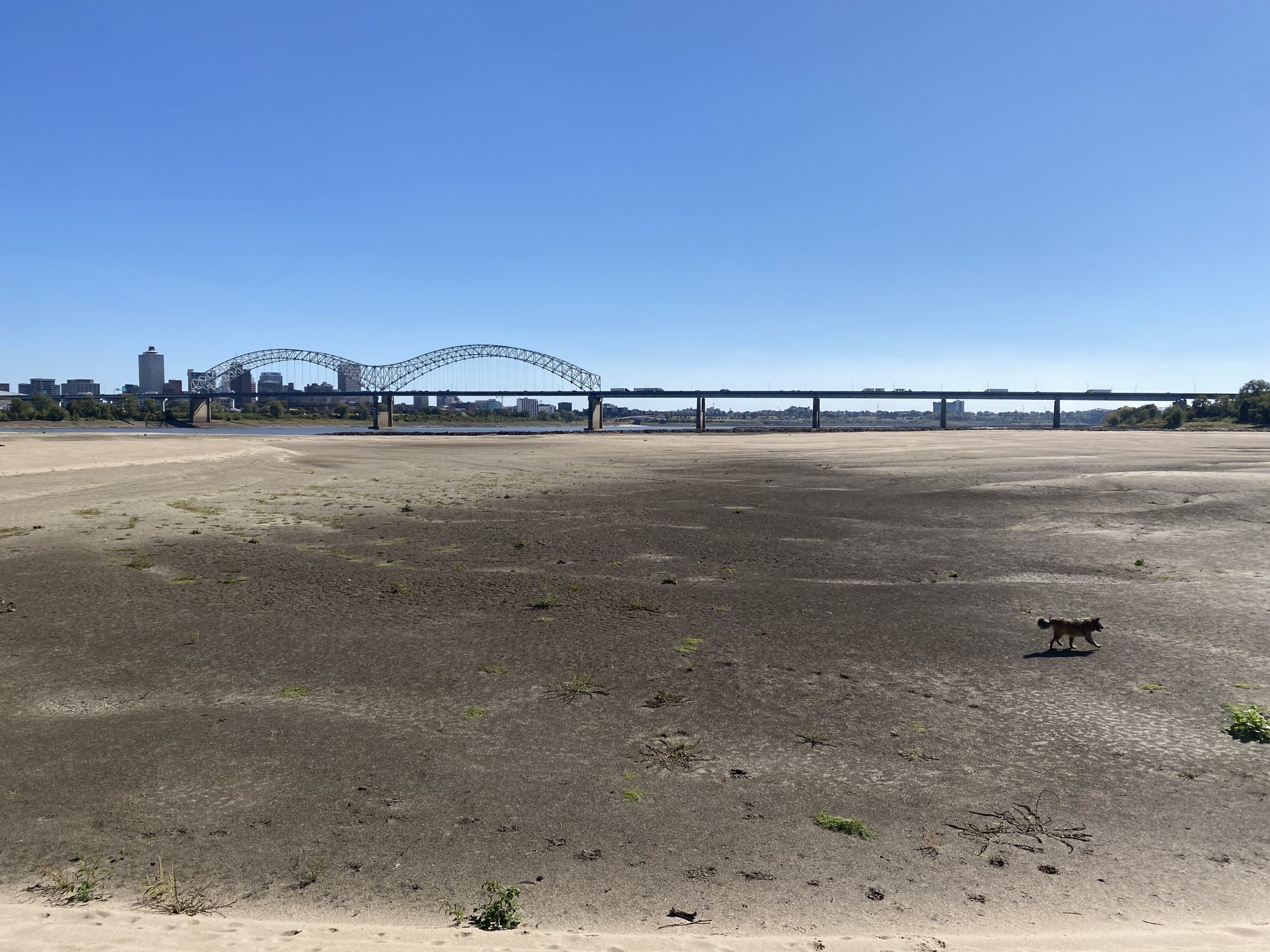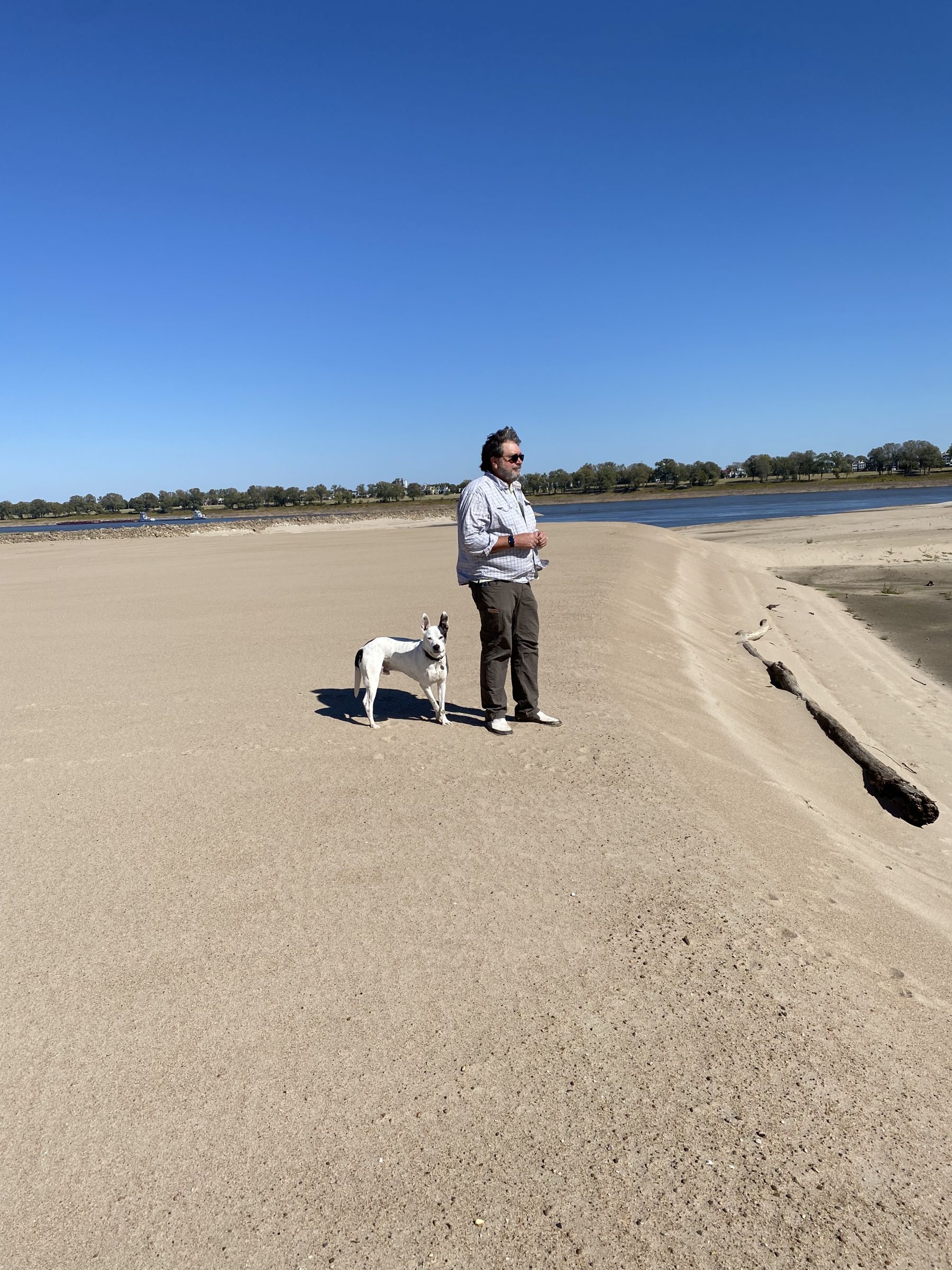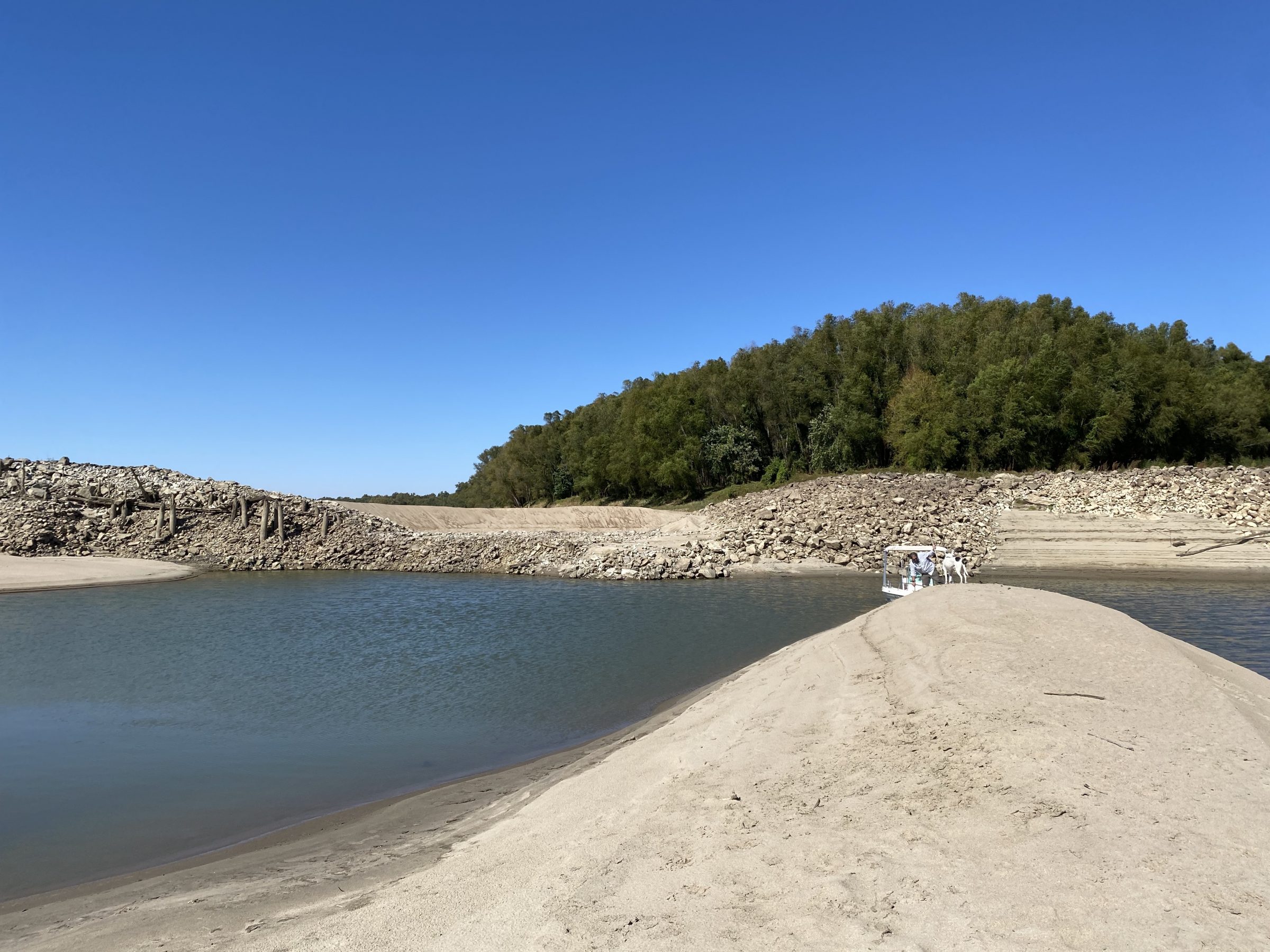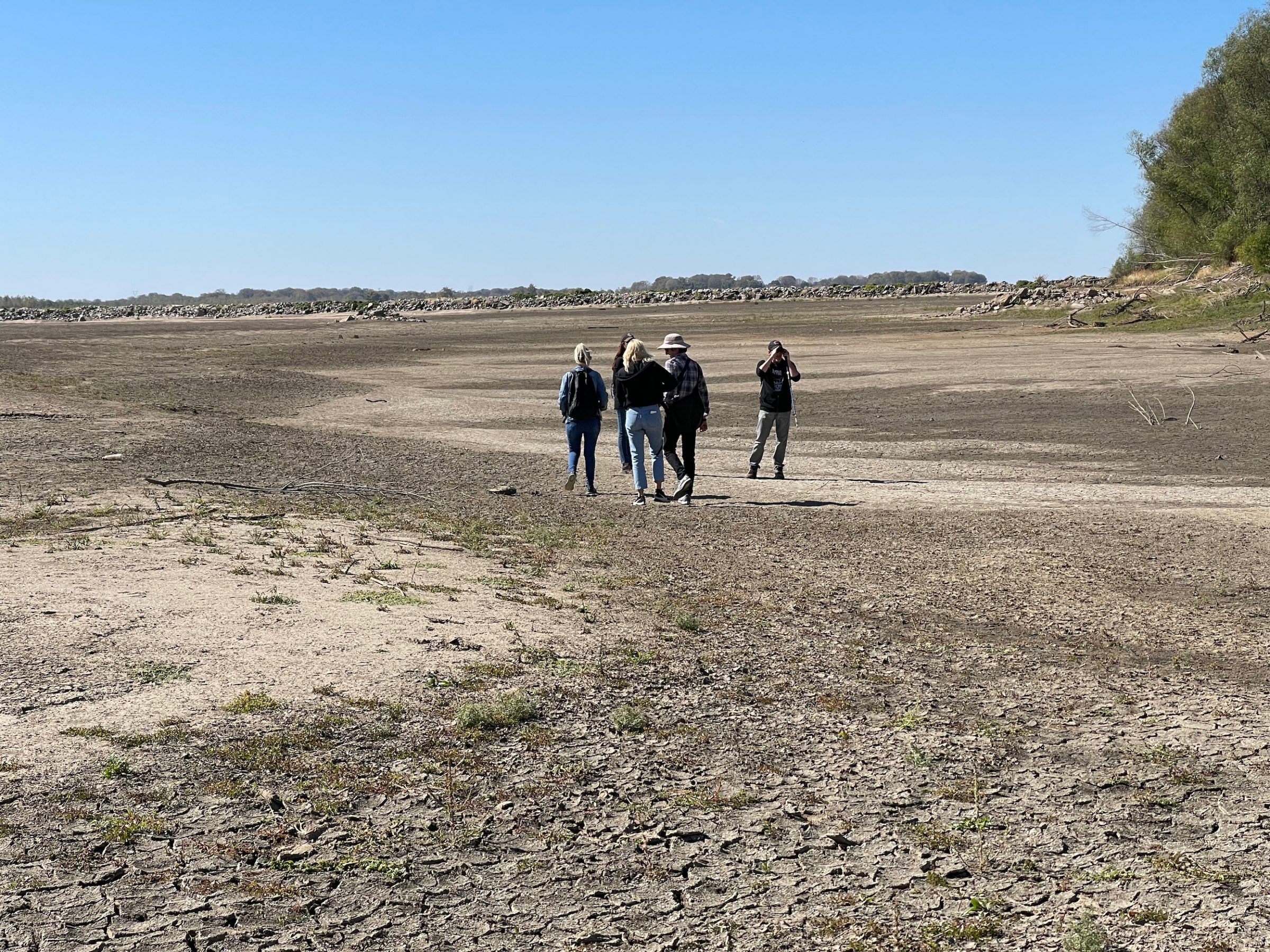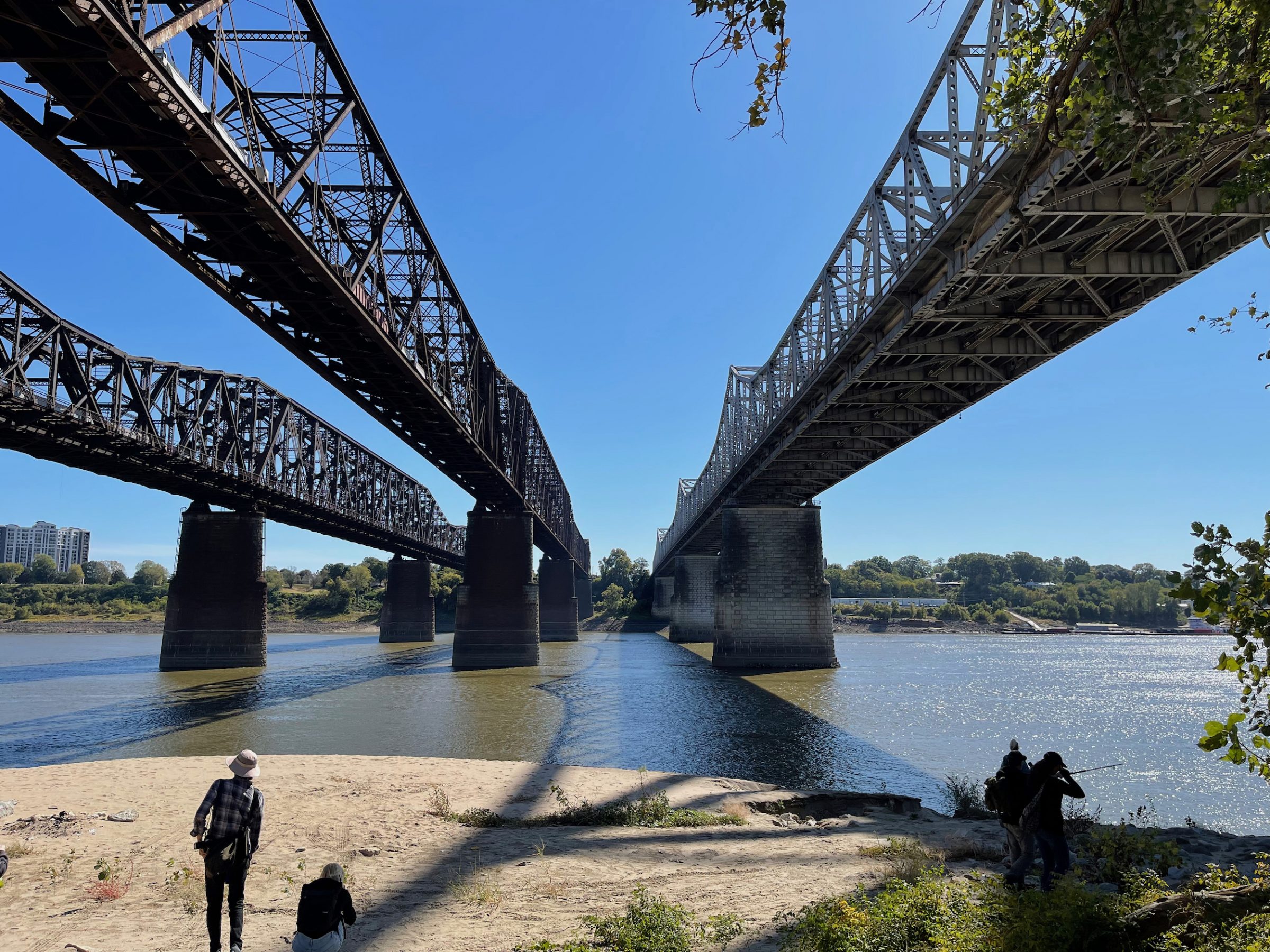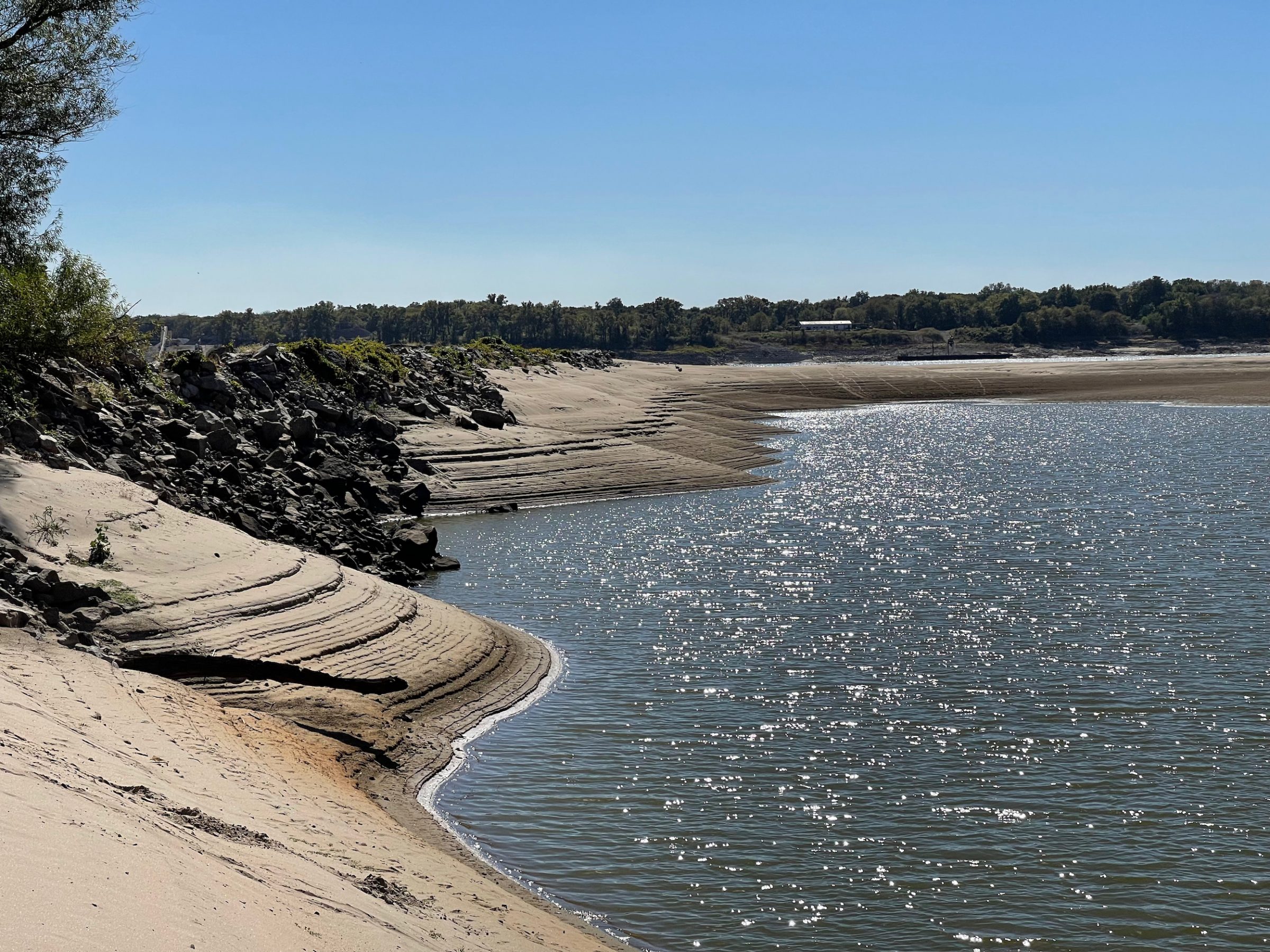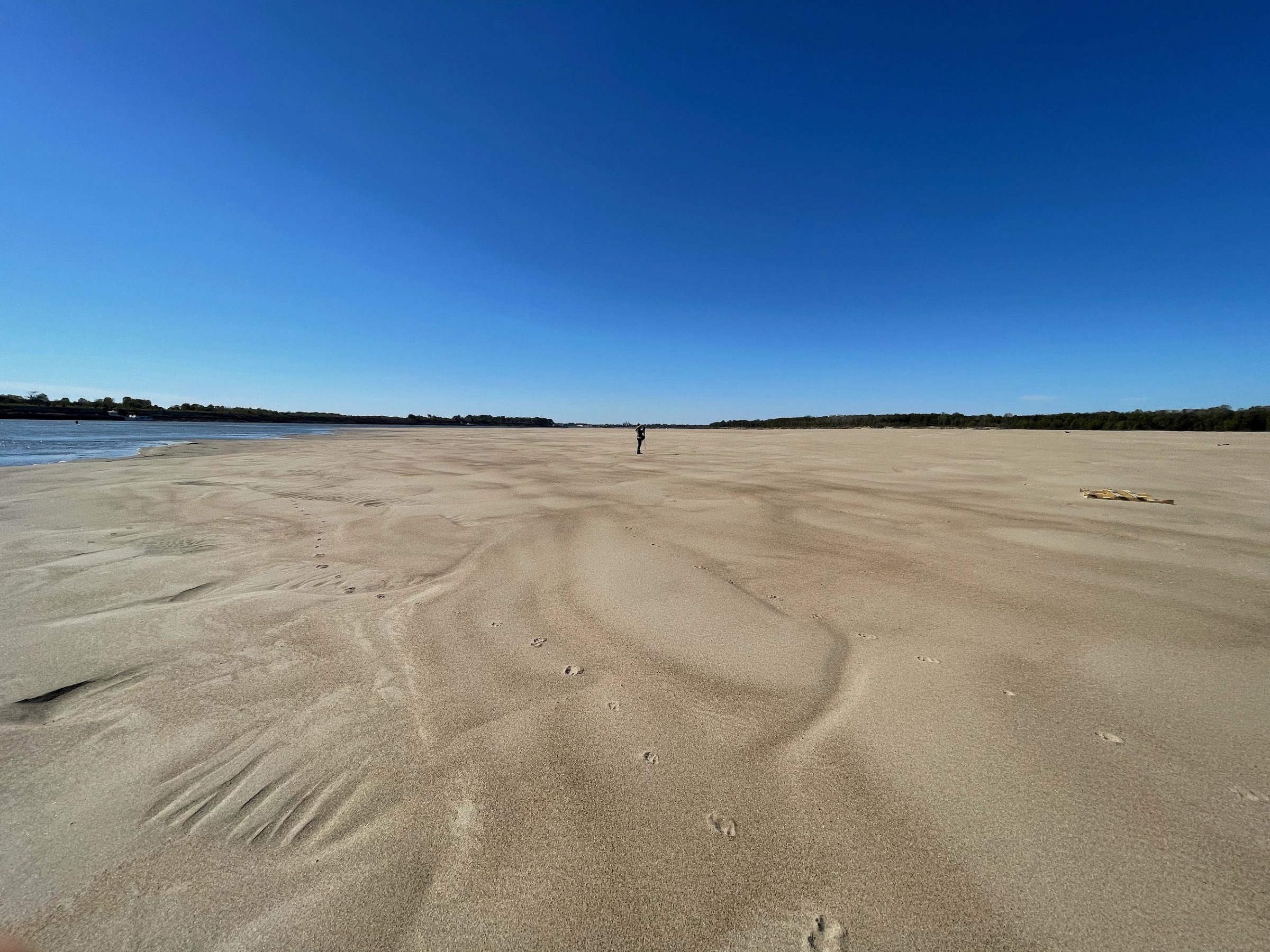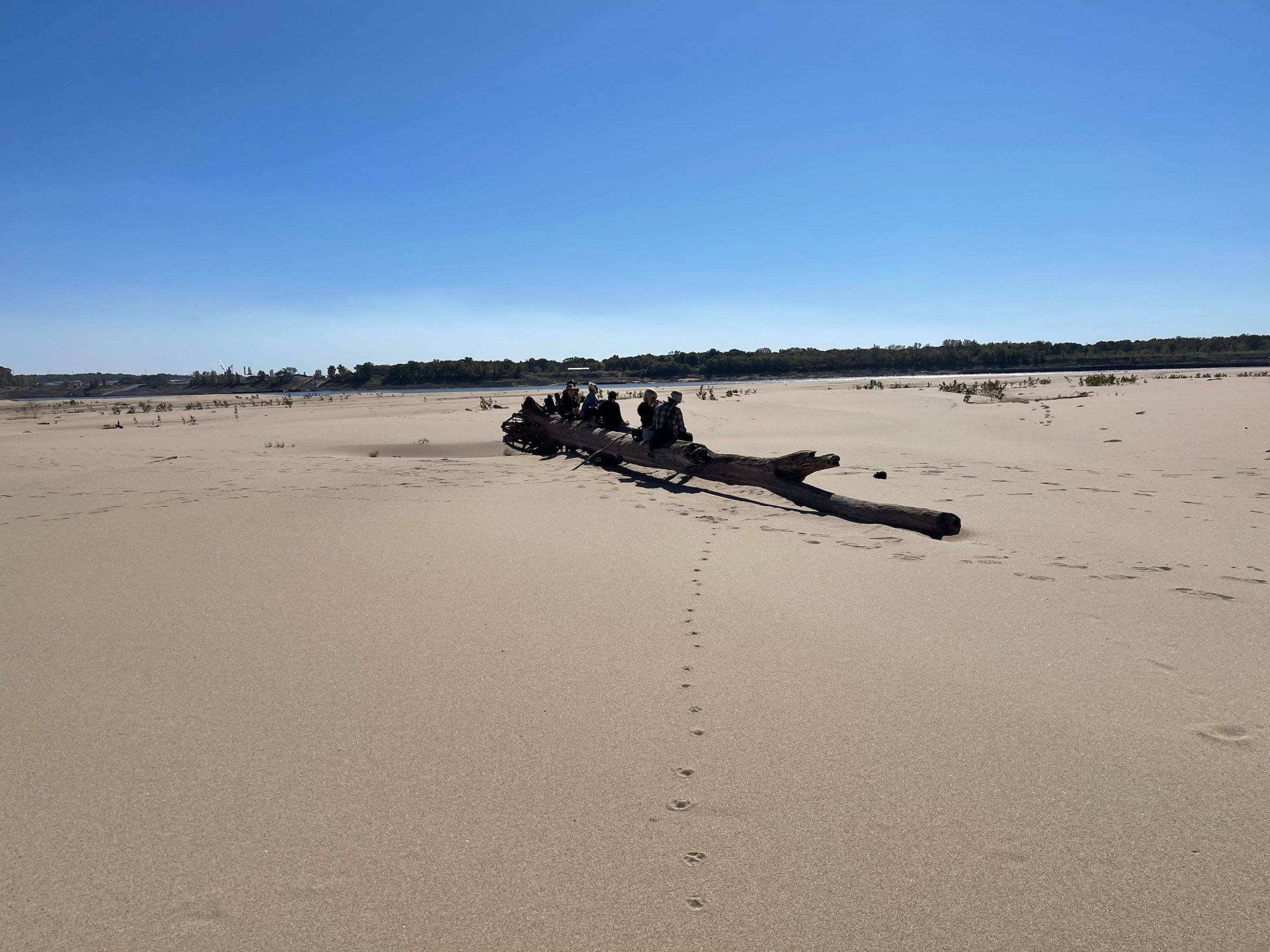For the third year in a row, extreme drought conditions in the Midwest are drawing down water levels on the Mississippi River, raising prices for companies that transport goods downstream and forcing governments and business owners to seek alternative solutions.
Extreme swings between drought and flooding have become more frequent in the region, scientists say, as climate change alters the planet’s weather patterns and inches the average global temperature continually upwards.
“Without question, it’s discouraging that we’re in year three of this. Because that is quite unique to have multiple years in a row of this,” said Mike Steenhoek, executive director of the Soy Transportation Coalition, a trade organization representing Midwest soy growers. “We’re obviously trending in the wrong direction.”
Since 2022, much of the Midwest has experienced some level of drought, with the driest conditions concentrated in Iowa, Missouri, Nebraska and Kansas. Record rainfall in June and during part of July temporarily broke that dry spell, forecasters say, only for drought conditions to reemerge in recent weeks along the Ohio River basin, which typically supplies more water to the Mississippi than any other major tributary.

Water levels have been dropping in the lower Mississippi since mid-July, federal data show, reaching nearly seven feet below the historic average in Memphis on September 13. In October 2023, water levels reached a record-low -11 feet in Memphis. Remnants of Hurricane Francine, which made landfall in Louisiana Wednesday night as a Category 2 storm, “will provide only temporary relief,” the National Oceanic and Atmospheric Administration said in a news release Wednesday.
“Rainfall over the Ohio Valley is also not looking to be widespread and heavy enough to generate lasting effects and anticipate that much of the rainfall will soak into the ground with little runoff,” the agency said in the release.
Those conditions have raised prices for companies transporting fuel and grain down the Mississippi in recent weeks, as load restrictions force barge operators to limit their hauls, which squeezes their profit margin. Barge rates from St. Louis reached $24.62 a ton in late August and $27.49 per ton by the following week, according to the U.S. Department of Agriculture.
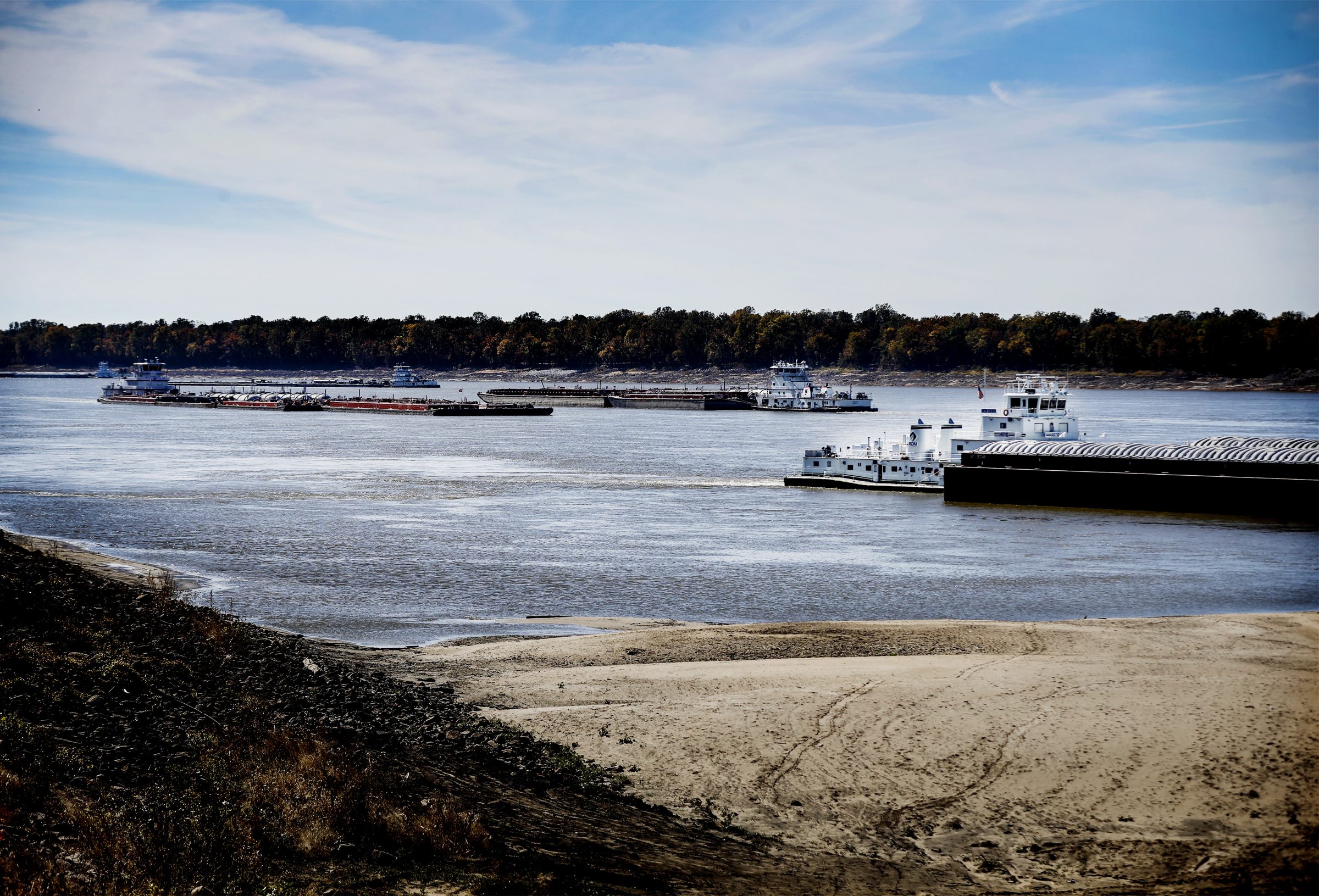
Steenhoek said barge prices during the first week of September were 8 percent higher than the same week last year and 57 percent higher than the three-year average. “It does change that supply-demand relationship,” he said, “because now all of a sudden you’re having to transport a given amount of freight with less capacity.”
A river in flux
Aaron Wilson, Ohio’s state climatologist and a professor at Ohio State University, said the whiplash between this summer’s record wet months and September’s drought conditions appears to fit what could be an emerging climate trend observed by researchers.
The Midwest region has generally gotten wetter over the decades. The Fifth National Climate Assessment, released last year, reported that annual precipitation increased by 5 to 15 percent across much of the Midwest in the 30-year period leading up to 2021, compared to the average between 1901 and 1960.
But evidence also suggests the Midwest is experiencing more frequent swings between extreme wet and extreme dry seasons, with climate models predicting that the trend will persist into the future, said Wilson, who was the lead author of the assessment’s Midwest chapter.
“This was front and center for us,” he said. “One of the main things that we talked about were these rapid oscillations … between wet to dry and dry to wet extremes.”
Research also suggests that seasonal precipitation is trending in opposite directions, and will continue to do so in the coming decades, Wilson added. “And so what you get is too much water in the winter and spring and not enough during the growing season,” he said, referring to summer months.
If that evidence holds true, it could have notable impacts on U.S. food exports moving forward.
Future impacts on shipping
Transporting goods, including corn, soy, and fuel, on the Mississippi is more efficient pound for pound than ground transportation, business groups say, and gives the U.S. an edge in a competitive global market. According to the Waterways Council, a trade association for businesses that use the Mississippi River, a standard 15-barge load is equivalent to 1,050 semi trucks or 216 train cars — meaning domestic farmers and other producers can save significant time and money moving their goods by boat.
The majority of U.S. agricultural exports rely on the Mississippi to reach the international market, as farmers move their crops to export hubs on the Gulf Coast, said Debra Calhoun, senior vice president of the Waterways Council.
“More than 65 percent of our national agriculture products that are bound for export are moving on this inland waterway system,” she said. “So this system is critical to farmers of any size farm.”
The ramifications could be especially harmful to the soy industry, Steenhoek said, since about half of the soy grown in the U.S. is exported. By the last week of August, grain exports transported by barge fell 17 percent compared to the week before, according to a Thursday report released by the USDA.
Steenhoek said the increased costs to U.S. growers hurt their ability to compete globally. Any price increase to domestic grain could encourage international clients to instead buy from rival countries like Brazil or Argentina, he said.
While it’s typical for water levels on the Mississippi to drop during the fall months, Steenhoek said, the recent years of drought have been a real wakeup call for farmers to diversify their supply chains. Soy growers, he said, have since set up new supply chain agreements with rail lines and have even invested in new export terminals in Washington state and on the coast of Lake Michigan in Milwaukee.
Luckily, Calhoun said, disruptions to river transportation this year haven’t been nearly as bad as they were last year, when the Mississippi’s water levels reached record lows. Several barges were grounded last year and in 2022, she said, referring to when boats get stuck on the riverbed or in areas where sediment has built up. That hasn’t occurred so far this year.

She chalks that up to proactive efforts this year by companies and federal agencies, like the Army Corps of Engineers, to mitigate transportation disruptions.
George Stringham, chief of public affairs for the Corps’ St. Louis District, said they started dredging the river a few weeks earlier this year. “We started early to get ahead of things, in anticipation, after having two straight years of low water conditions,” said Stringham. Dredging involves moving sediment on the riverbed from areas where it can cause problems to boats to areas where it won’t.
Wilson, Ohio’s climatologist, said he has seen stronger cooperation among stakeholders in tackling this issue. “It’s a mix of climate scientists, social scientists and planners and emergency preparedness folks that are really coordinating this effort,” he said.
The result, Calhoun said, is that their coalition of groups have been able to handle the disruptions relatively well this year, which leaves her feeling cautiously optimistic. “It’s really hard, you know, to track this and try to figure out is it just normal? Is it getting much worse? Are we going to have to make significant changes, and if so, what would they be? But we’re not there yet,” she said.
This story is a product of the Mississippi River Basin Ag & Water Desk, an independent reporting network based at the University of Missouri in partnership with Report for America, with major funding from the Walton Family Foundation.
